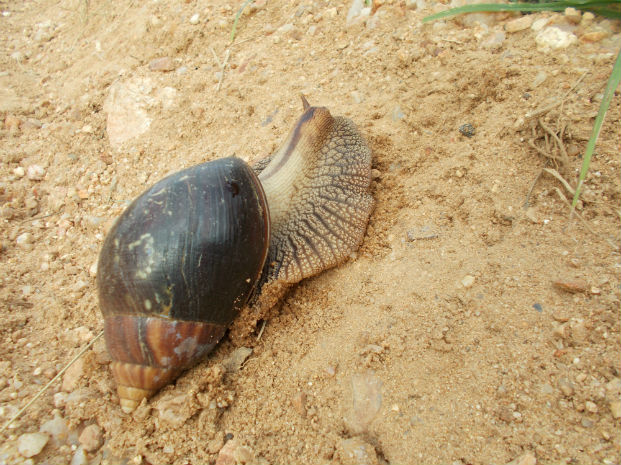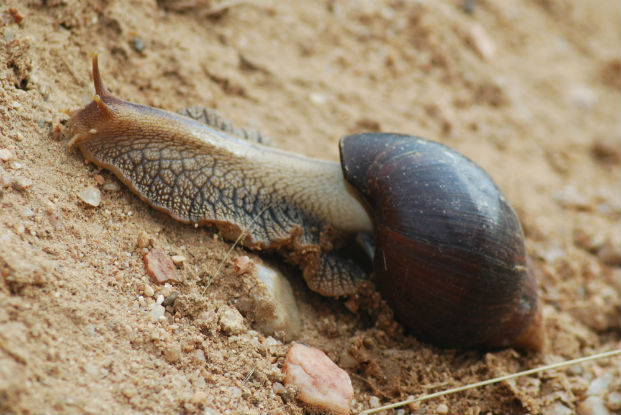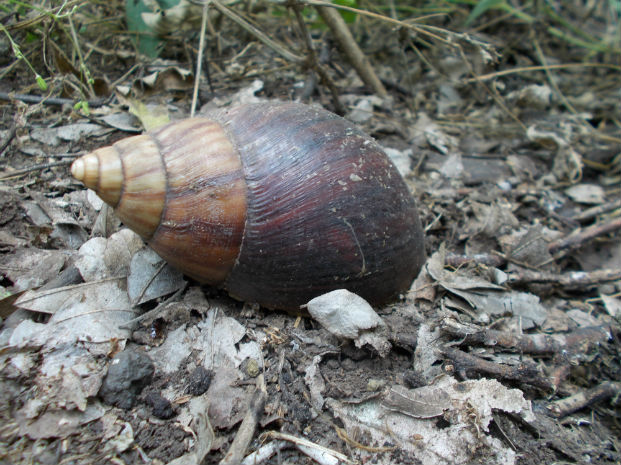Originally from east Africa the African giant land snail can be found around the world. So much so that the Global invasive species database have ranked it amongst the top 100 most invasive. It is one of the largest snails in the world. It can reach 20 cm in length and the shell can stand at 7cm high. This snail is a hermaphrodite with individuals being able to produce both sperm and egg cells. Snails are mostly active at night when they are less likely to become dehydrated. During the day they will avoid the high temperatures by sheltering in damp vegetation and under stones so that their soft bodies are kept moist.
Vote for the fact you find most fascinating
Snails move around on one large muscular foot. To do so they produce a mucus from a gland in the foot which they can then slide over aided by undulating contractions of the foot.
The African giant land snail is one of the largest snails in the world. It can reach 20 cm in length and the shell can stand at 7cm high.
The African giant land snail is a prolific breeder. Throughout the course of a year it can produce 1,200 eggs in clutches of 200 at a 90% success rate.
Originally from east Africa the African giant land snail can be found around the world. So much so that the Global invasive species database have ranked it amongst the top 100 most invasive.
The African giant land snail requires calcium for the development of its large shell. When this is lacking in their food they will eat small stones, sand, bones and even concrete.
A snails teeth are set on a piece of flesh called the radula. This conveyor-like membrane acts like a file which grinds at the vegetation when it feeds.
Most terrestrial snails and slugs are hermaphrodites. This means that each one carries both male and female reproductive organs. However, they still need to find a partner to cross fertilise. They do this by swapping sperm capsules which they can store inside their bodies for 2 years.
Those living off the land in Africa may grind up the shell of the giant land snail so that they can use it as a calcium supplement when feeding their babies.





